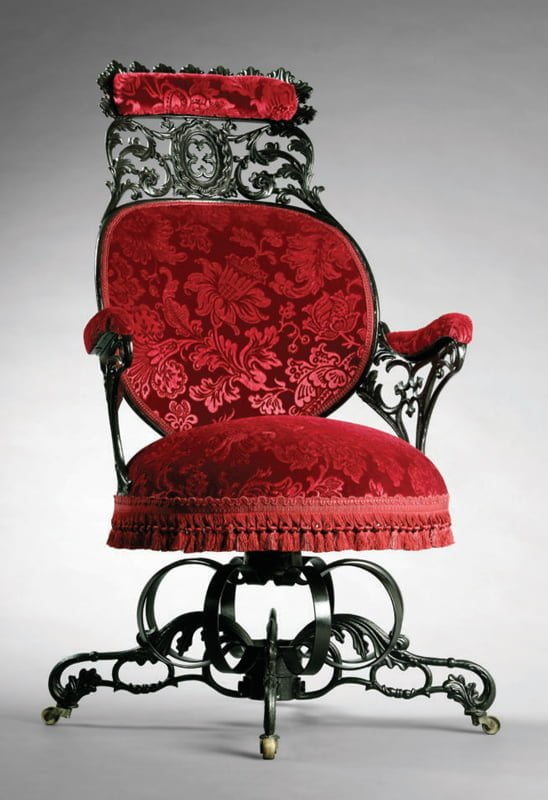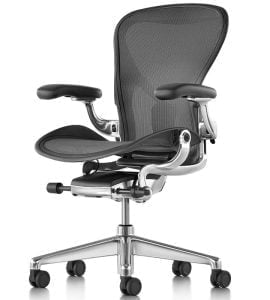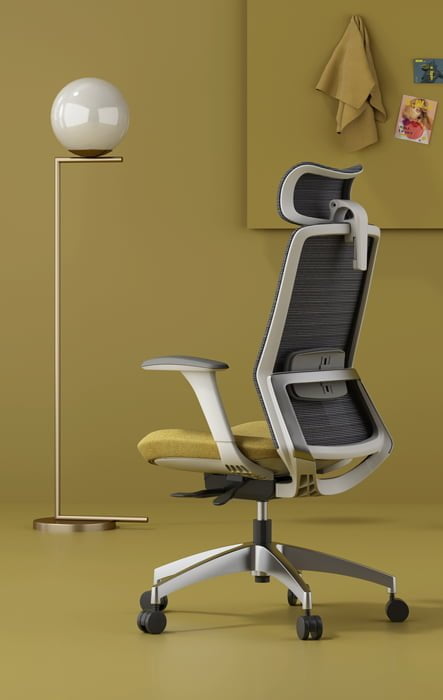Most people sit on one every working day and take them for granted, but what is the history of office chairs? Where did they come from?
With the average office worker spending 75% of their waking hours sitting down, the humble office chair has become one of the most important design objects in our daily lives.
A Brief History of Office Chairs
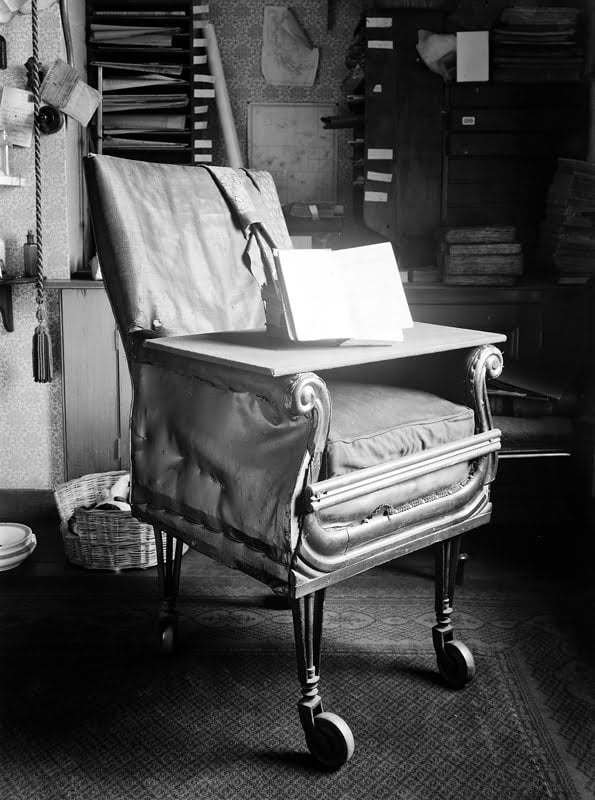
Exactly how and when they evolved is up for debate, but it is generally accepted that the Industrial Revolution gave birth to the widespread use of office chairs. Although the concept of a height-adjustable swivel chair on wheels was illustrated Martin Löffelholz von Kolberg in 1505, the first "real" office chair was created by Charles Darwin, who, in the early 1840's, fitted wheels to his study chair so that he could move around his laboratory more easily.
Prior to the 19th Century, most people were employed either 'on the land', or in small family businesses located in towns and villages. The concept of an office or working chair was foreign to most people, as this was an item exclusively meant for wealthy individuals, royalty, government officials, and academics.
History of Office Chairs - Interesting Fact
The former German chancellor and prime minister, Otto von Bismarck, popularised office chairs by making them widely available.
Bismarck did this by giving every member of the German parliament a chair based on Darwin's concept. This eventually resulted in the office chair being made available to the general public where it became an outstanding success.
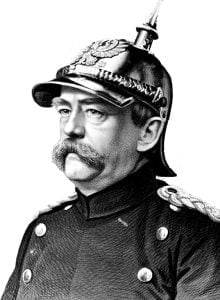
The Industrial Revolution changed the way we work
The Industrial Revolution, which began in Europe in about 1760 and ran until sometime between 1820 and 1840, changed the way we work. The boom in manufacturing was aided by the expansion of the railroads and the more efficient transport of both raw materials and finished goods. This meant that by the mid-19th Century, businesses began to expand rapidly and so needed more staff.
Controlling production and administration became a specialised task that required clerical workers who spent large portions of their working day sitting down. The traditional model of labour began to change as people moved from working in fields to working indoors, either on the factory floor, or as clerical and administrative staff. This brought about a new middle management level to oversee the administrative function. As the white collar worker became an important economic resource, business owners began to recognise the value of making them comfortable to improve their productivity.
1849: The first mass-production office chair
Delving back into history, the Centripetal Spring Armchair was the first mass-produced office chair. It was designed in 1849 by the American inventor Thomas E. Warren and was manufactured by the American Chair Company in New York.
Made of cast iron and upholstered in velvet, these chairs included modern design elements that we now take for granted. Standard features included a full tilt movement enabled by four large springs, a revolving seat, headrest, armrests and even small castors for manoeuvrability....the ergonomic office chair was born.
Towards the end of the Industrial Revolution, office workers had become entrenched in businesses. At the Centennial Exposition in Philadelphia in 1876, the office furniture exhibit was the most popular attraction.

Office Chairs in the early 20th Century
By the early 20th Century, the desk job was a staple function in the global economy, and industrial designers had taken up the challenge to design office furniture.
In 1904, the American architect Frank Lloyd Wright, designed office chairs to compliment the architecture of his Larkin Building. The chairs featured an innovative height adjustment mechanism, but lacked any other features that we take for granted today. He made an even more uncomfortable and highly unstable three-legged version dubbed the “suicide chair,” intended for the largely female secretarial staff.
Office Chairs post World War II
Office chairs evolved into a more recognisable form after World War II. Ergonomic research during the war played a huge role in the design of cockpits in fighter planes and tanks. As the decades passed, more and more chair designs emerged but it was only really during the 1970's that modern workplace ergonomics started to come into play. In 1976 Emilio Ambasz designed the Vertebra Chair which was inspired by the spine and was one of the first automatically adjustable office chairs.
History of Office Chairs - Interesting Fact
In 1976, Herman Miller designer, Bill Stumpf created the famous Ergon Chair.
The Ergon was perhaps the first chair designed for comfort and sustaining physical health. It featured a moulded foam seat and backrest with good lumbar support, a gas-activated height and tilt mechanism, and a five-star base with castors.
Mesh Chairs
In 1994 Herman Miller launched another pioneering design...the Aeron Chair which was designed by Bill Stumpf and Don Chadwick. The most notable features were the reactive tilt mechanism and full mesh seat and backrest.
The Aeron was the forerunner of the modern mesh chairs we have today. Mesh seat office chair: The pros and cons
Future of the Office Chair
The office chairs we use today are the culmination of a century-long process shaped by history, specifically design trends and socio-economic factors.
What’s next? Research is ongoing, but initial studies show that most office workers should sit less and stand more, especially those working in call centers that operate 24/7 - 7 Benefits of using a Sit Stand Desk.
The surge in hybrid work means that many people require a quality chair both at home, and at the office. Unfortunately, premium chairs are expensive which makes them somewhat inaccessible to many home users. The future of work and office design.
Perhaps this will lead to a change in the way work chairs are bought and sold so more people can take advantage of quality materials, ergonomic best practices and beautiful designs like the Capri Ergonomic Chair.


